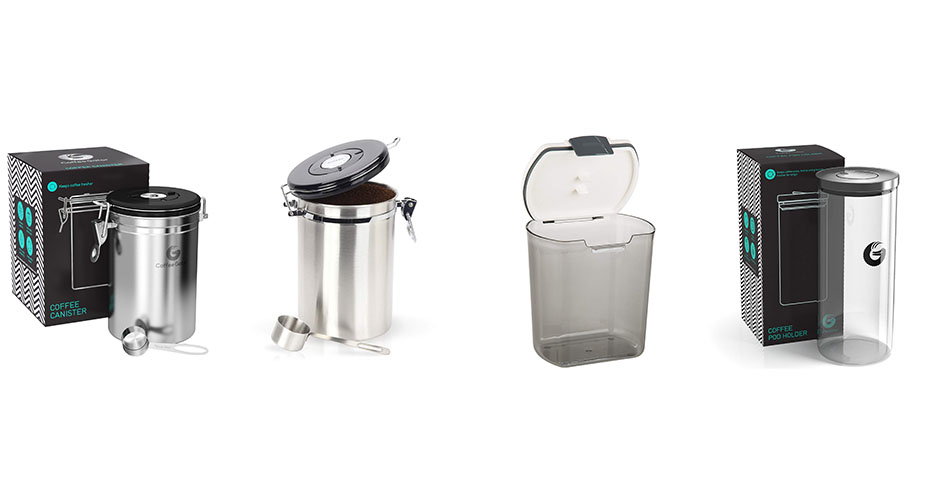10 Simple Mistakes When Brewing Coffee
Certain mistakes can be made in the brewing process that determines the flavor and aromas given off. Here are 10 Simple Mistakes When Brewing Coffee. However, for most people brewing coffee is pretty straight forward, grind the coffee beans and add the desired amount of hot water.

Water Temperature Of Coffee
Ideal water temperature allows the coffee compounds to extract properly,
Brewing coffee over 205°F will over-extract the coffee grounds producing bitter taste, burnt flavor, and minimum acidity.
Higher temperatures are needed as you get into the dark roast coffee in order to extract properly. This is near the maximum water temperature of 205°F and gives the brewed coffee a bold and strong flavor.
How Old Is The Coffee Beans?
The shelf life of coffee varies between whole beans, ground coffee and instant coffee as well the state they are stored in.
Before purchasing your coffee check the expiry date, it may already be several months old.
Instant coffee is dehydrated removing water and making it powder or dry fragrant. This helps keep it from expiring the longest, up to 20 years in a pantry and indefinitely in the freezer properly sealed.
Whole coffee beans doesn’t last as long due to the hard outer shell, it can last 6 – 9 months in a pantry and 2 – 3 years in a freezer.
Ground coffee will expire the quickest as its exposed to oxygen and moisture. Within 3 – 5 months in a pantry and 1 – 2 years in a freezer.

What Quality Of Water Do You Use?
A simple solution for improving the quality of water is by using water filtration systems that can be attached to a kitchen faucet or a brita water pitcher stored in the fridge.
Active charcoal carbon filters are built inside removing sediment, chlorine, and volatile organic compounds. These impurities can change the taste and odors of coffee when brewing a fresh pot.
Coffee To Water Ratio?
Do You Have Coffee To Water Ratio Proper? Waking up in the morning craving a fresh cup of coffee can be a task itself.
One common mistake people make is inadequate coffee to water ratio when brewing a pot of coffee, a general guideline is called the “Golden Ratio“. For every six ounces of water add one to two tablespoons of ground coffee“.
If you prefer weaker coffee add up to eight ounces of water per one to two tablespoons.

To much coffee grinds to water ratio will make your brewed coffee taste bitter, bold, and strong like an espresso shot.
Adding to much water to coffee grinds will make your brewed coffee taste weak, watered down, and lack of coffee flavor.
A simple eye and smell test determines if the coffee to water ratio is adequate, here’s what to look for
- to much water will appear a lighter brown color, lack of coffee aromas, and weak taste
- too much coffee grinds will appear a dark brown color, strong taste, and powerful aromas
Are You Using The Proper Equipment?
With many ways in brewing coffee, its no surprise certain methods require specific equipment. what coffee equipment to use?
As the coffee industry evolves, so does methods of brewing coffee. The most common way is a home coffee maker or espresso machine.
Here are 8 different ways of making coffee, each method takes certain equipment and patience in order to make the freshest cup.
Coffee under 195°F will be under-extracted and take longer to brew leading to sour, underdeveloped flavors.
Light to medium roast coffee is often brewed near the minimum water temperatures of 195°
Storing Coffee Beans Properly?
When storing coffee it’s best to keep it out of direct sunlight, contact with oxygen, and away from both hot/cold conditions.
Oxygen that comes in contact with coffee grounds removing natural oils in the beans called Lipids, these become unstable losing both aromas and flavors through a process called Oxidization.
Best place to store coffee is away from windows (especially south facing) and doors, this will prevent windy conditions which speeds up the process of oxidization.
Stainless Steel Coffee Container
What Kind Of Coffee Beans Are You Purchasing?
How To Choose Best Coffee Beans? Convenience isn’t everything when brewing coffee, whole beans stay fresh much longer as it’s protected by a hard shell. This helps keep the flavors and natural oils inside.
Although whole beans won’t be completely protected from moisture and oxygen its a start.
How Coarse Are Your Coffee Grinds?
With many methods of brewing coffee and ways to make them it’s not surprising coffee grinds vary from coarse to extra fine. French press uses coarse grinds and Turkish coffee uses extra fine. How much coffee grounds to use?
As water passes through the coffee grinds it begins the abstraction process, each method of brewing takes certain grinds insuring the best cup of java.
Ranging from espresso to French press determines the grind size and time it takes for the brewing process.
Checkout Our Other Articles On CoffeeBrat.com
What Is Robusta? – Why Is It Called That?
Sumatra Coffee – What Are The Growing Regions?
How To Remove Old Coffee Stains From Clothing – Can You Get Them Out?
What Is Arabica Coffee? Does It Mean Anything?
How To Make Strong Coffee – What Is The Best Brewing Method?
What Kind Of Coffee Beans Have You Purchased?
The two most common types of coffee beans are arabica and robusta. Ever wonder the differences between these beans? We wrote full blog posts describing them what is arabica coffee and what is robusta coffee.
Arabica coffee is the most popular coffee drink worldwide, making 60% of all coffee beans sold. Higher sugar content with low acidity gives these beans a sweeter and less bitter taste.
When purchasing coffee from your local store look for 100% Arabica on the packaging.
How Often Do You Clean The Equipment?
In order to keep your coffee tasting fresh, the equipment needs to be cleaned at least once a month. This prevents hard water build up, debris from the beans, and lime deposit building up in the reservoir.
One of the easiest ways of cleaning you’re coffee equipment is with brew rite coffee maker cleaner, it removes hidden mineral deposits and improves brewing times without leaving any harmful residue.
How Much Vinegar Do You Use To Clean A Coffee Maker?
A standard coffee maker can hold up to 12 cups of coffee, rule of thumb for cleaning is equal parts water to vinegar ratio.
If your cleaning once per month we recommend having at least 1500 ml or 48 ounces at home. This allows for any extra vinegar needed for cooking or other conventional methods of cleaning.
What Is The Best Way To Clean A Coffee Maker?
The best way to clean a coffee maker is either a mixture of baking soda and vinegar or cleaning solution that can be added to a brewing cycle. Certain materials should be within reach before starting the cleaning process.
Starting the cleaning process you’ll need a few household items, we have them listed below.
- White Vinegar
- Water
- Damp
- Dish Towel
- Hot Soapy Water (To clean removable parts)
- Dry Towel
Cleaning Instructions
1. Remove the access coffee grounds from the filter, and rinse the carafe
2. Mix one part water to one part vinegar (Recommend 6 cups each)
3. Fill the water chamber to its capacity, make sure the solution is equal parts water and white vinegar
4. Begin the brewing cycle, halfway through turn off the coffee maker, and let it sit for an hour
5. Pour out the water-vinegar solution and refill the water chamber. Only water this time
6. Run brewing cycles two more times, cycles allow cool down time
7. Wash both carafe and filter basket with hot soapy water, reassemble and enjoy!
Final Thoughts
Next time before brewing coffee think of these Simple Mistakes that can be avoided to ensure the best tasting coffee.
Thank you for stopping by CoffeeBrat.






